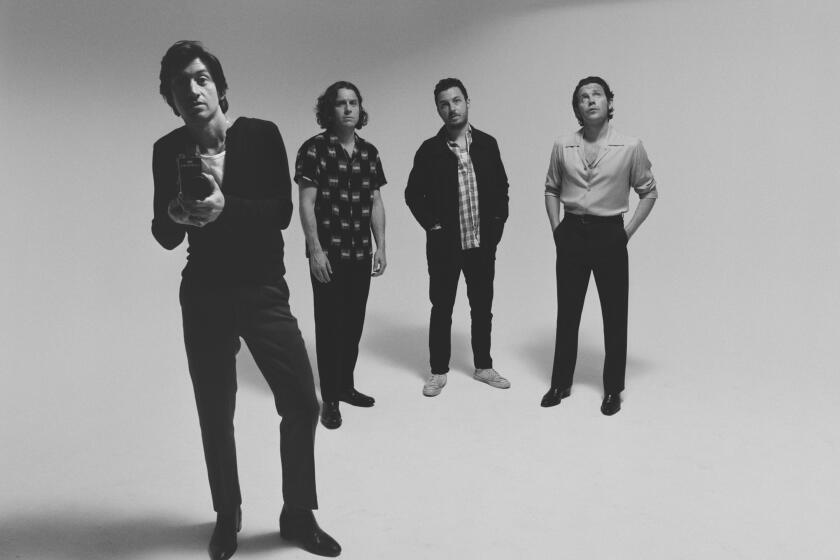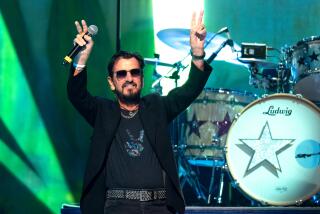The Beatles at their ‘peak’: A new box set sheds light on the making of ‘Revolver’
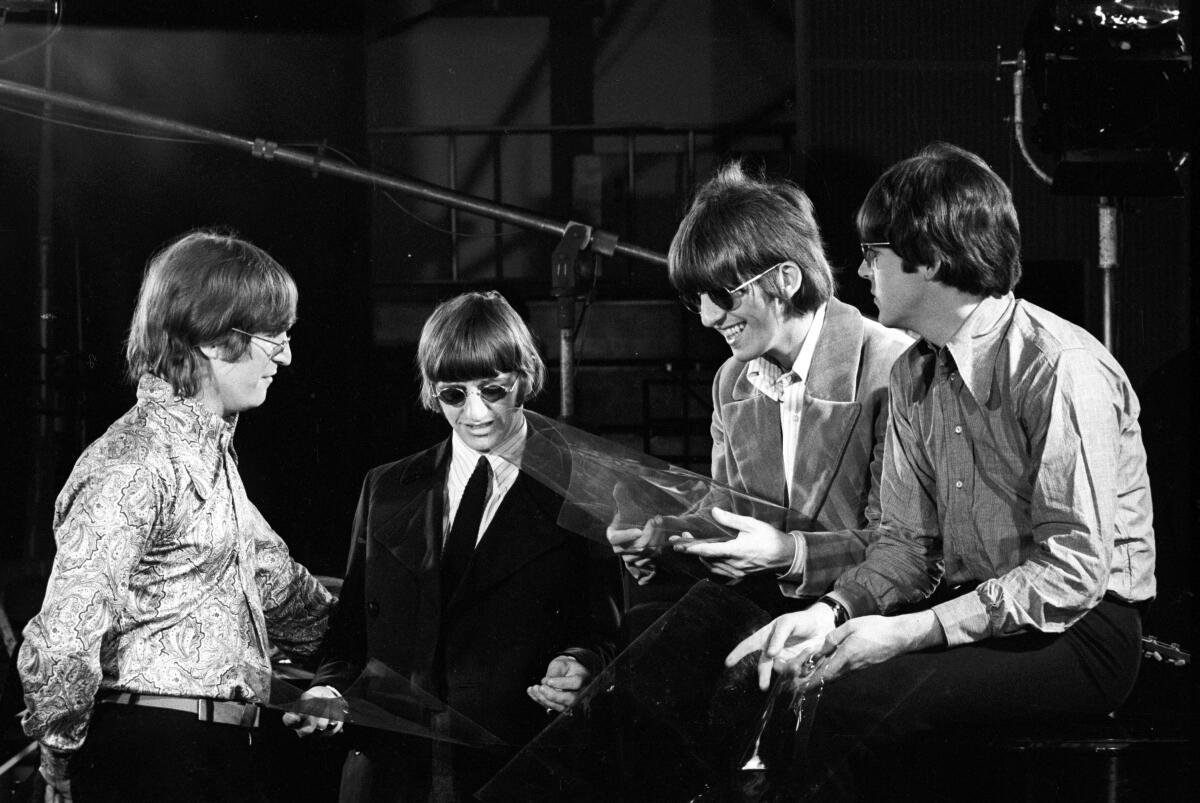
- Share via
In an episode of “Mad Men” called “Lady Lazarus,” set in October 1966, advertising executive Don Draper complains to his young wife, Megan, that he no longer understands youth culture. Megan recommends that he play “Tomorrow Never Knows,” the closing track on the Beatles’ new album “Revolver.” Whiskey in hand, he listens closely, but after 102 seconds of dueling tape loops, psychedelic rhythms and John Lennon intoning lines from “Tibetan Book of the Dead,” he yanks the needle and goes to bed. If this is the sound of what’s happening now, then he wants no part of it.
According to Klaus Voormann, the German artist who designed “Revolver’s” Grammy-winning record cover art, some members of the Beatles’ inner circle anxiously anticipated this kind of reaction. Voormann, who met the Beatles in Hamburg, Germany, in 1960 and briefly shared an apartment with George Harrison and Ringo Starr, remembers going to the EMI Recording Studios on London’s Abbey Road that summer to sit down with the band and hear their seventh studio album for the first time.
“The problem for the band, even though they didn’t tell me at the time, was that the music was getting far ahead of what pop music was in those days,” he says. “They thought the media and the public would not accept it: ‘Oh, the Beatles have gone crazy!’ [Beatles manager] Brian Epstein was definitely worried. He thought maybe we are going to lose fans.”
“Tomorrow Never Knows” was the first song the Beatles recorded when they entered Abbey Road on April 6, 1966, and the most radical. Nothing else on “Revolver” sounds anything like it, but then the album’s striking feature is that each of its songs is a distinct entity. Instead of settling on one new direction, the Beatles proposed 14 possibilities — 16 if you count the contemporaneous single “Paperback Writer”/“Rain.” In his liner notes to a new special edition of “Revolver,” on sale Friday, Questlove calls it “a concept album about not having a concept.”

Beatles fans will never agree on what is the band’s finest album, but “Revolver” began to replace “Sgt. Pepper’s Lonely Hearts Club Band” as the consensus choice in the 1990s, when its influence manifested in artists as diverse as Oasis, the Chemical Brothers and Elliott Smith. “Everyone was trying to make their own ‘Revolver’ or equivalent classic album,” Blur’s Graham Coxon recalled recently.
“Revolver” still holds that position, despite containing none of the Beatles’ most-streamed songs. Perhaps it is the Goldilocks option. In transition from songs that were designed to be played live to ones that could never be played live, “Revolver” is explosively adventurous yet focused and concise. The often weighty themes — heartbreak, madness, death, taxes — don’t diminish its exuberance. Even as the contrasting personalities of John, Paul, George and Ringo came to the fore, they still delighted in each other’s company.
“They were expanding their boundaries, but they still had that energy and excitement of a group playing together,” says Rod Argent of the Zombies, the first British band to top the Cashbox chart after the Beatles. “The sum was greater than the parts, and the parts were pretty bloody good.”
The concert, the first of 15 at the Kia Forum, was, as Styles announced, a place to ‘feel free to be whoever it is that you’ve always wanted to be.’
Fifty-six years later, “Revolver” has been remixed by Giles Martin, the son of its original producer, George Martin, with input from Paul McCartney and Starr. Because the album was recorded on two-track master tapes, this would not have been possible if not for the innovative audio separation technology developed by Peter Jackson’s team for “The Beatles: Get Back,” the director’s recent documentary about the making of “Let It Be.” Having worked on “Get Back,” Giles Martin found himself pivoting from the fractious headspace of the Beatles in 1969 to the much livelier mind-set of 1966.
“The ‘Get Back’ period was like all of your Christmas presents have been opened,” Martin says in a suave English accent uncannily reminiscent of his late father’s. “It’s January and they’re left on the floor. ‘Revolver’s’ like opening the presents and each one is a new idea. Even the drums sound different on every single song. Bowie famously would change genres for each album. The Beatles seemed to do it within an album.”
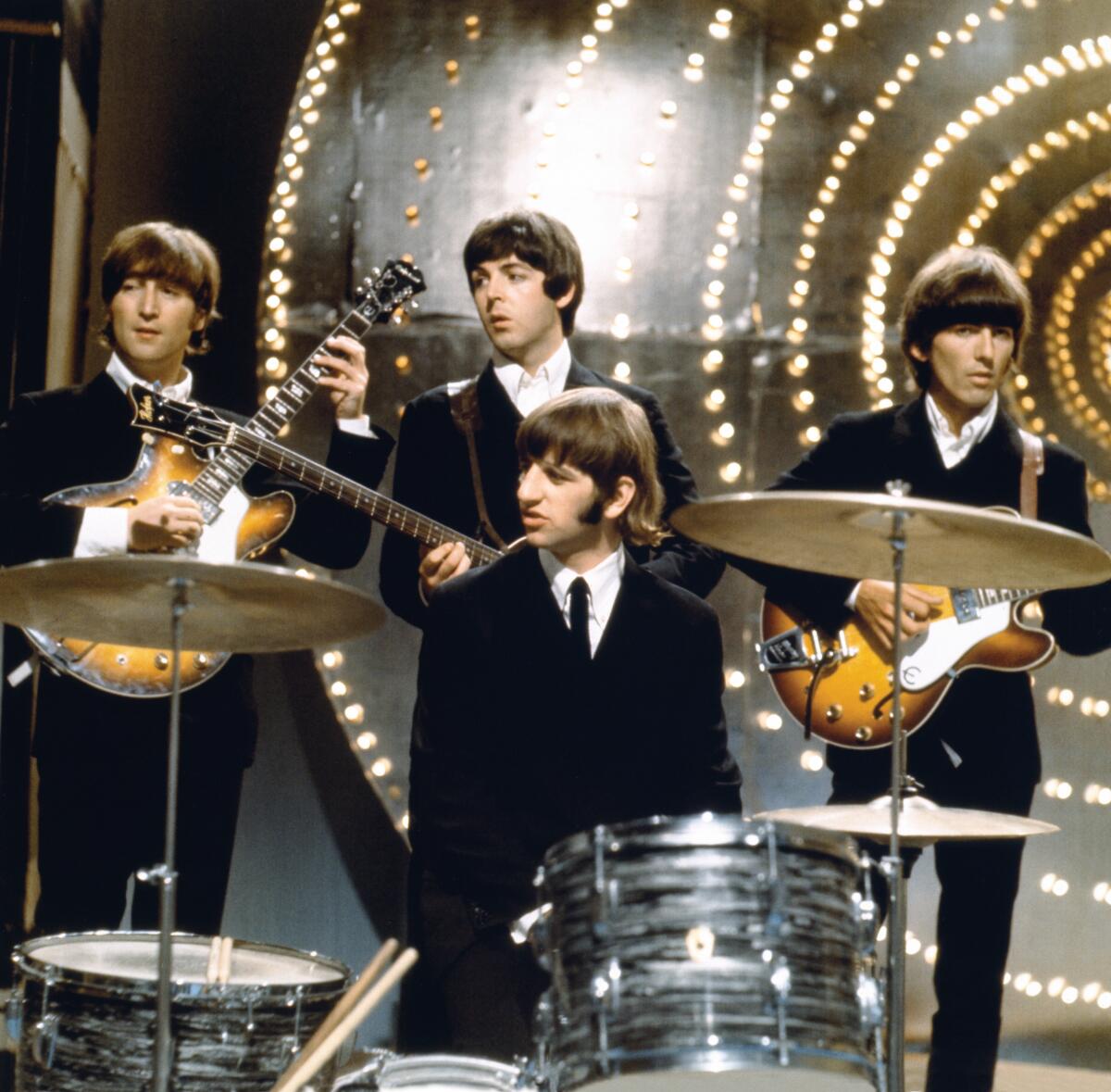
The Beatles had not yet quit playing live altogether, but they came to “Revolver” refreshed by an unprecedented four months off, owing to the postponement of their third movie. Lennon and Starr spent their downtime with their wives and small children. Harrison got married and studied the sitar. McCartney, meanwhile, was on a mission to absorb the full spectrum of the 1960s avant-garde, from visual art and short films to free jazz and musique concrète. He may have been the last Beatle to try LSD but he was the one who sought out meetings with counterculture icons such as Allen Ginsberg and William Burroughs. Time magazine was about to anoint London “The Swinging City” and McCartney was in the thick of it. “I’ve got thousands, millions, of new ideas myself,” he told radio DJ Alan Freeman. “Paul was always nosy,” Voormann says, laughing. “He wants to know everything.”
McCartney, most of all, wanted to prove that pop music was a serious art form worthy of similar respect, and that meant being open to anything. McCartney alone originated a delicate love song (“Here, There and Everywhere”), an ode to marijuana in the R&B style of Stax (“Got to Get You Into My Life”) and a bleak character study backed by a string octet (“Eleanor Rigby”). Lennon waded into darker, more introspective waters on “I’m Only Sleeping” and “She Said She Said.” Harrison contributed three songs for the first time, including the barbed opener “Taxman.”
“They wore the suits, they did the smiles, they shook their heads so the girls screamed,” Martin says. “And I think they got to the stage where they thought, F— this. We don’t want to be that anymore. We are individuals. We’re not a four-headed monster wearing a suit. Paul said to me ‘Revolver’ is their most individual album.”
After dropping a plan to record at Stax in Memphis, the Beatles returned to Abbey Road, a rather staid and bureaucratic studio that was swiftly becoming a dope-fogged hotbed of experimentation. They had 11 weeks, which was a luxury at a time when singles were typically recorded in three hours. The studio itself became an instrument as George Martin and his engineers, Ken Townsend and 20-year-old newcomer Geoff Emerick, innovated with double-tracking, microphone placement and sound effects. To achieve the impression of an underwater vocal on “Yellow Submarine,” Emerick sheathed a microphone in a condom and dropped it into a bottle of water. Running guitar parts backwards became an obsession. Yet the arrangements are deceptively simple. Even “Tomorrow Never Knows,” Martin says, is very efficient compared to the average modern pop production. “It’s like a great artist who can [draw] four lines on a page and you know exactly what it is,” he says.
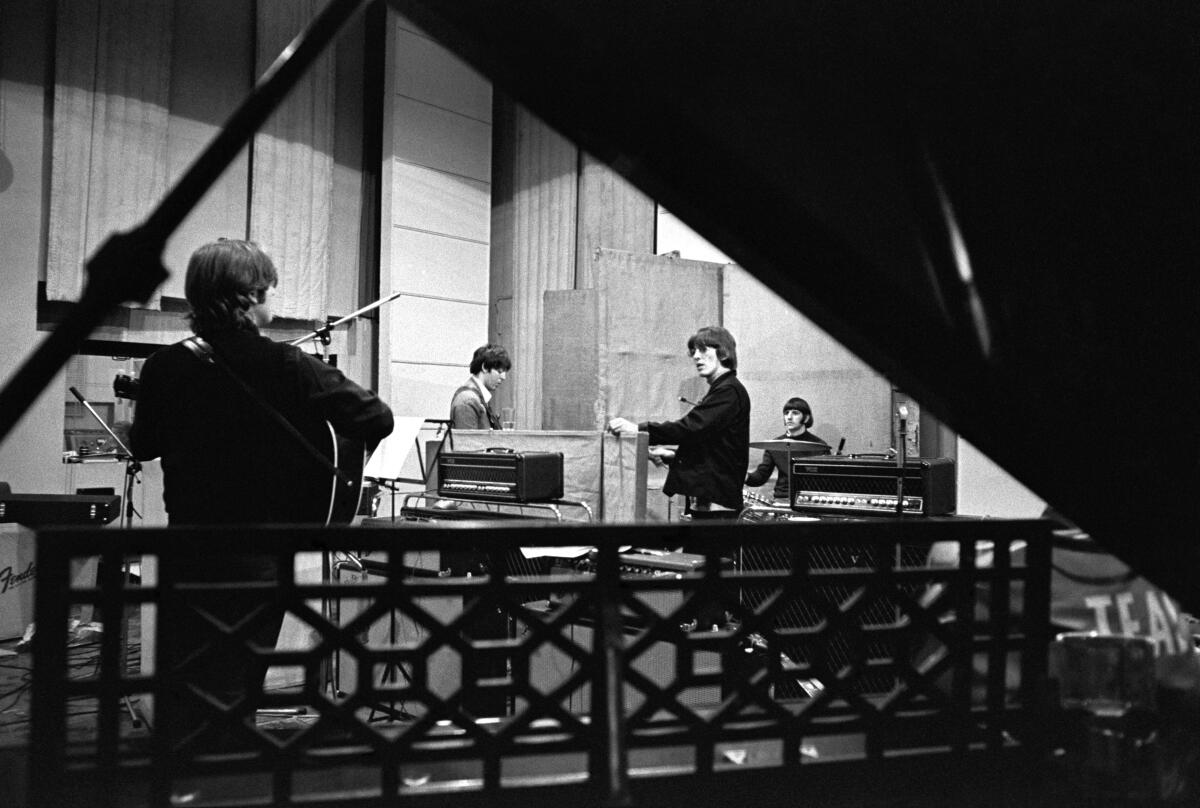
The Beatles hit their deadline for wrapping “Revolver” with the frantic completion of “She Said She Said” in the early hours of June 22. “All right, boys,” said an exhausted George Martin, “I’m just going for a lie down.”
When Voormann attended the Abbey Road playback, the album didn’t yet have a title; options included “Pendulum,” “Four Sides of the Circle” and “Beatles on Safari.” The band gave him a free hand to come up with some suitably fresh cover art concepts. “I wanted people to know what’s on the record,” Voormann says. “Not just another cover with the four faces, everyone smiling, and all in color. I knew I had to do something that was way out, looking into the future, opening people to different kinds of attitudes in life.”
Working anxiously late into the night for a week, he filled a sheet of A2 graphic paper with magic-marker sketches — the Beatles in a hot-air balloon, the Beatles in a boat — but correctly predicted that the band would choose the image inspired by their lengthening hair: an illustration of four heads in the style of the Victorian artist Aubrey Beardsley. He then incorporated a collage of old photographs in order to build a bridge between where they had been and where they were going.
The following year, Voormann visited Abbey Road during the sessions for “Sgt. Pepper’s” and noticed a loosening of the bonds that would completely unravel by 1970. “You realized that everybody was living separately, they didn’t play live anymore, so all they did was meet in the studio. It was a different sort of atmosphere. ‘Sgt. Pepper’ is a great idea and there are fantastic songs on it, but I find that ‘Revolver’ is the peak of the band being a band.”
“It’s an album unified by confidence and bare-faced youthful enthusiasm more than anything else,” Martin says. “If John said, ‘I want to sing from a Himalayan mountaintop,’ or George said, ‘I want to play more sitar and tamboura,’ they’d go, ‘Yeah, great!’ They knew they could do it.” Even having to direct classical musicians on “Eleanor Rigby” and “For No One” didn’t faze them.
While struggling with a soundtrack commission in 2014, Martin asked his father if he had ever experienced a similar crisis of confidence. “And he goes, ‘No, we always thought we were brilliant.’ There wasn’t even a question within the Beatles that they weren’t really, really good.”
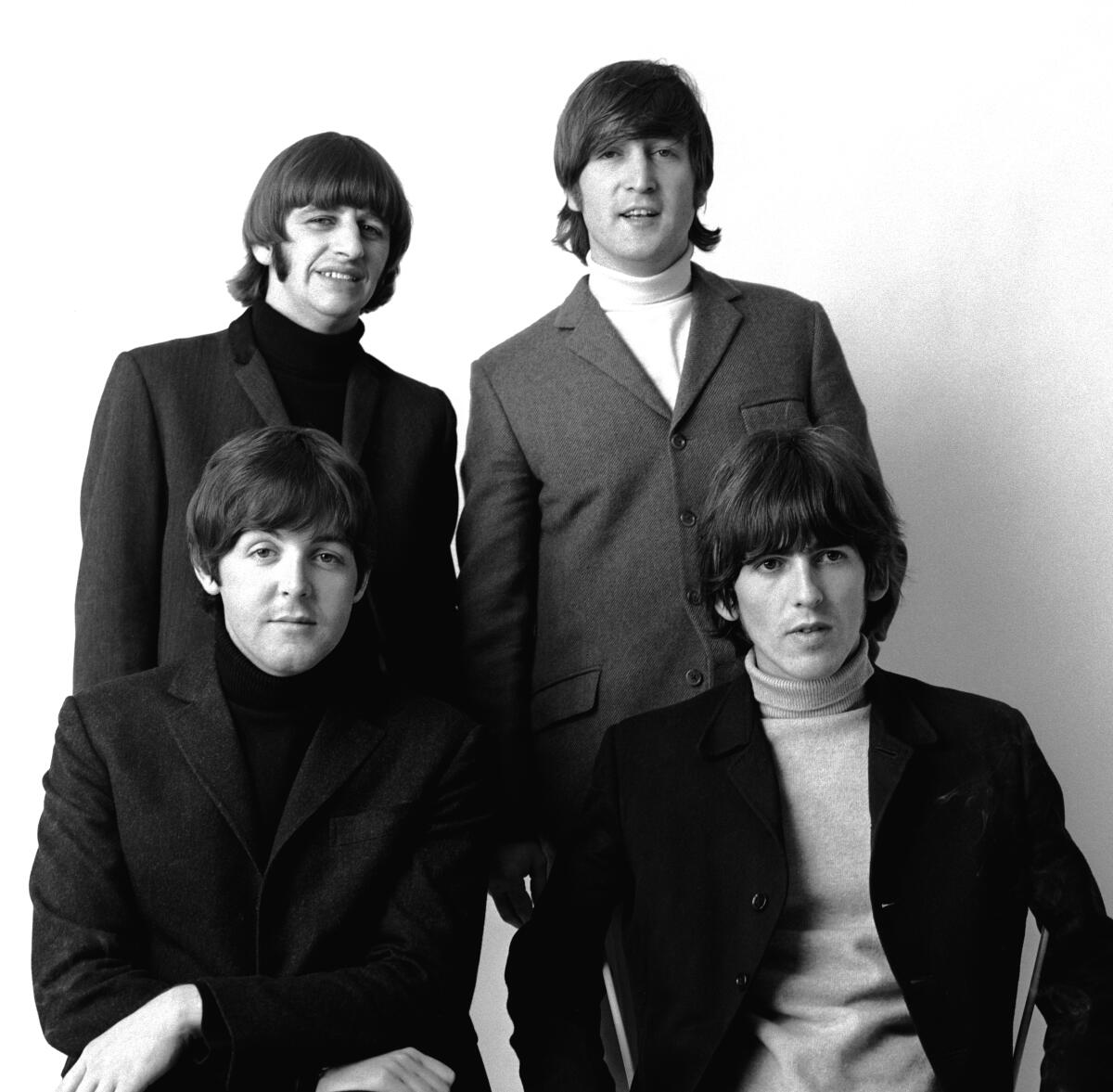
“Revolver” was released in the U.K. on Aug. 5, 1966, and in North America, with a mutilated track listing, three days later. “We’ll lose some fans with it,” McCartney predicted, “but we’ll also gain some.” In the U.K., where it surfed a wave of national euphoria following England’s victory in the soccer World Cup, “Revolver” outsold everything except “The Sound of Music.” In the U.S., where the album launched the band’s final tour, its initial impact was muted by the ruckus over Lennon’s widely misunderstood remark that the Beatles were “more popular than Jesus.” Nowhere was it the unignorable cultural phenomenon that “Sgt. Pepper” became.
Most musicians, however, were united in awe. “For me, ‘Revolver’ is the Beatles’ best album,” says John Sebastian of the Lovin’ Spoonful, who later learned that his song “Daydream” had inspired the album’s feel-good side-two opener, “Good Day Sunshine.” “Everybody thought that ‘Sgt. Pepper’ was the greatest thing ever [but] it didn’t have what ‘Revolver’ had. ‘Revolver’ was ferocious in its originality.”
Rod Argent says “Revolver’s” intrepid spirit raised everybody’s game. “We drank it in. Everybody did, from the Stones to the smallest semipro band. It was very enabling and energizing.”
Over tea in Los Feliz, Turner discusses his band’s new album, ‘The Car,’ and the ‘amusing choices’ he made as a younger singer.
While working on the stereo remix, Martin vowed not to do anything that his father and the Beatles would not have done if the technology had been available in 1966. “It’s not my interpretation,” he insists. His priority was to enhance the album’s youthful, anything-goes vitality. “The band are always going to be 25 on ‘Revolver’ — they’re younger than Harry Styles — so they might as well sound like that. That enthusiasm!”
The special edition also includes a remastered mono version and two discs of outtakes, which Martin compares to the pencil sketches in an art exhibition. Lennon’s first demo of “Yellow Submarine” is the major revelation. The song that ended up delighting millions of children and inspiring an animated movie began life as a gloomy folk ballad about a dying town.
Yet the main attraction of the outtakes is what happens outside of the music: the snatches of conversation, laughter and friendly disagreement that place the listener in the room with four young men who feel as if there is nothing they cannot do.
“It’s humans in a room making a noise,” Martin says fondly. “They don’t realize they’re making something we’ll listen to in 56 years — or even two years. I know for a fact that they never thought the music would go on for as long as it has.”
When it comes to “Revolver,” that was the only thing the Beatles were wrong about.
More to Read
The biggest entertainment stories
Get our big stories about Hollywood, film, television, music, arts, culture and more right in your inbox as soon as they publish.
You may occasionally receive promotional content from the Los Angeles Times.

